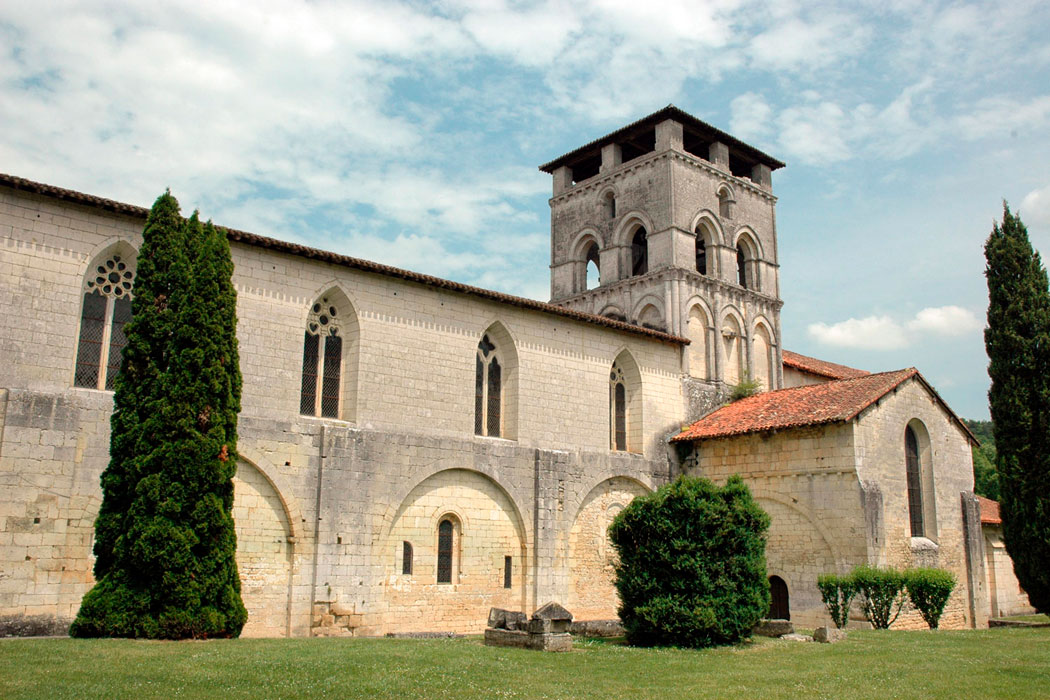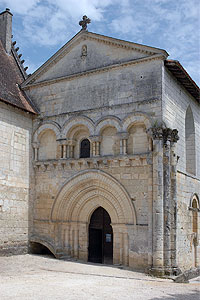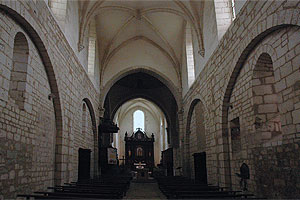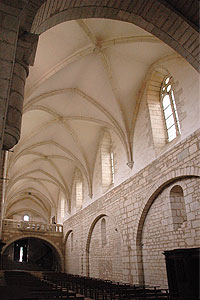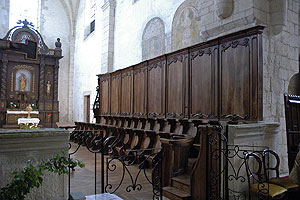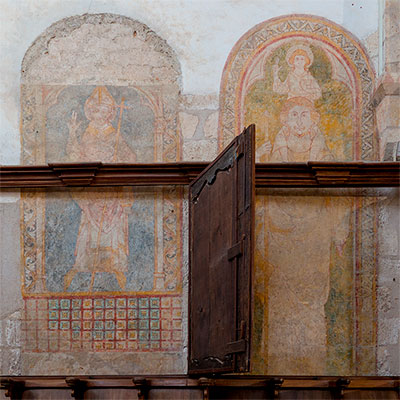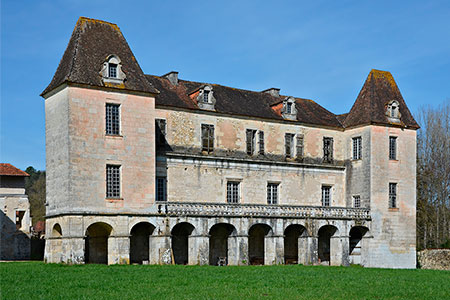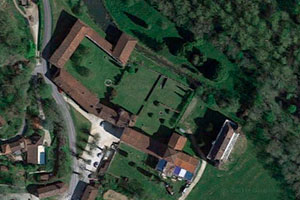Abbey of Notre-Dame de Chancelade
Abbaye de Chancelade / Fons Cancellatus / Cancellata
(Chancelade, Dordogne)
In the year 1101, during the pontificate of Pope Paschal II, the Augustinian canons of the Abbey of Saint-Pierre de Cellefrouin (Charente) were forced to adopt the Benedictine rule and placed under the authority of the Abbey of Charroux (Vienne). Around 1120, Abbot Foucault, considered a disciple of Robert d'Arbrissel, disagreed with this change and left Cellefrouin, relocating to Fons Cancellatus, where he settled precariously.
Around him, several hermits gathered, gradually forming a new community. In 1128, with the support of the Bishop of Périgueux, construction of a church began, and in 1131 the altar was consecrated, although the works would not be completed until the mid-century. In 1133, the community was formally established as a monastic house, adopting the Rule of St. Augustine, like the former canonry of Cellefrouin. The new abbey received various donations, including the estate of Merlande (around 1140), where a priory was founded. The abbey also promoted the establishment of Notre-Dame des Fontenelles (Vendée) and other foundations, eventually forming the Congregation of Chancelade.
Its prosperity continued to grow, and in 1175 it gained independence from the bishop, coming under the direct authority of the Holy See. However, during the first half of the 14th century, it began to decline, exacerbated by the Hundred Years' War, when the abbey was occupied, the canons were expelled, and the monastery was turned into a military garrison. By around 1440, the community had recovered, but it later suffered again, this time due to the Wars of Religion. In 1575, the abbey was looted and set on fire.
Despite this new calamity, the abbey was revived and underwent reforms in its monastic practices. In 1638, the restored church was consecrated, and in 1660 new constitutions were adopted for the congregation, which continued its activity until the French Revolution. In its final years, it even incorporated the Hospital and monastery of Aubrac (Aveyron). Finally, in 1790, the abbey was suppressed, and the monks were expelled, leaving the site vulnerable to looting.
Of the abbey, the medieval church still stands, although it was heavily modified in modern times. It has a single nave with a transept, and its chevet has been rebuilt. The walls of the nave remain, but the vaults were reconstructed in 1630. Regarding furnishings, some mural decorations from the 13th and 14th centuries are preserved, along with a 17th-century choir stall. The abbatial palace, of medieval origin, also survives, though with significant later modifications.
- BAUDRILLART, Alfred (1953). Dictionnaire d'histoire et de géographie ecclésiastiques. Vol. 12. París: Letouzey et Ané
- BESSE, J.-M. (1910). Abbayes et prieurés de l'ancienne France. Vol. 3: Provinces ecclésiastiques d'Auch et de Bordeaux. Abbaye de Ligugé
- BOISSERIE, Florence (2021). Chancelade - Abbaye, logis de l’abbé. Archéologie de la France
- CORVOISIER, Christian (1999). Chancelade. Abbaye Notre-Dame. Congrès archéologique de France. 156e session. Périgord. París: Société archéologique de France
- DE LA ROCHE, J. D. (1854). Notice sur l'abbaye de Chancelade. Le Chroniqueur du Périgord et du Limousin, núm. 2. Périgueux
- DESHOULIÈRES, François (1928). Chancelade. Congrès archéologique de France 90e session. Périgueux. París: Société française d'archéologie
- PELLICCIA, Guerrino; dir. i altres (1975). Dizionario degli istituti di perfezione. Vol. 2. Roma: Ed. Paoline
- SAINT-MAUR, Congregació de (1720). Gallia Christiana in provincias ecclesiasticas distributa. Vol. 2. París: Typographia Regia
- SECRET, Jean (1978). L’abbaye de Chancelade en Périgord. Périgueux: O.D.T. Dordogne
